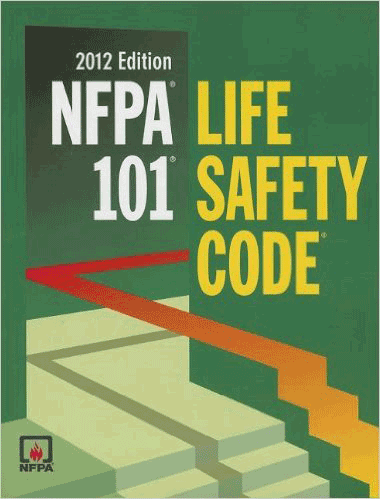On May 3rd, 2016, the Centers for Medicare & Medicaid Services (CMS) published a final rule in the Federal Register to adopt the 2012 Edition of NFPA 101, Life Safety Code. Here’s what you need to know:
- Effective Date – The 2012 Edition of NFPA 101 will become effective on July 5, 2016. Any buildings that have not received all pre-construction governmental approvals before this date, or those buildings that begin construction after this date, will be required to comply with the New Occupancy chapters of the 2012 Edition of NFPA 101. Any existing buildings permitted between March 11, 2003 and July 4, 2016 are subject to the requirements for new construction under Chapter 18 of the 2000 Life Safety Code. Those buildings will now be reviewed to the existing healthcare occupancy requirements contained in Chapter 19 under the 2012 Life Safety Code. Make note that the level of safety which the buildings were originally approved under cannot be reduced to the Chapter 19 requirements if they are less restrictive.
- Existing Building Rehabilitation – The 2012 Edition of NFPA 101 contains a brand new chapter, Chapter 43 – Building Rehabilitation. Existing buildings undergoing work after the effective date must comply with this chapter whose requirements vary depending on the scope and extent of the work occurring in the building. The classification of work dictates retroactive upgrades that may be triggered as part of the project.
- Ambulatory Health Care Occupancies – Ambulatory surgery centers (ASC) must comply with Ambulatory Health Care Occupancy requirements regardless of the number of patients served. This is a unique CMS regulation which is more stringent than the base 2012 NFPA 101 which only requires compliance with the Ambulatory Health Care Occupancy when 4 or more patients are incapable of self-preservation. An ASC is defined as any distinct entity that operates exclusively for the purpose of providing surgical services to patient not requiring hospitalization and in which the expected duration of services would not exceed 24 hours following an admission.
- High-Rise Buildings – All high-rise health care buildings will be required to have sprinkler systems installed throughout the building within 12 years of publication of the final ruling. Note that this timeframe may be less in some states which have already adopted more recent editions of NFPA 101.
- Significant Code Changes – There are many beneficial changes in the 2012 NFPA 101 including increased suite size allowances, less stringent travel distances, door locking arrangements, manual sliding doors, etc. Want to know more? Subscribe to our blog here where we will be tackling each significant change in a special 2012 NFPA 101 series over the next month.
Email us at info@crcfire.com if your team is interested in a customized learning opportunity on the 2012 Edition of NFPA 101!

